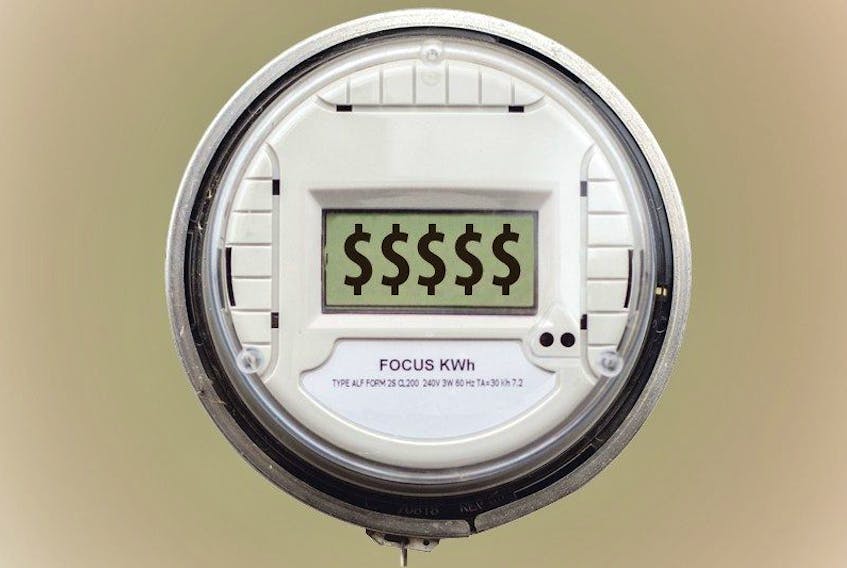
If you build it, they will come.
But if you raise their power rates, just as quickly, they may go.
And that's the conundrum.
The Upper Lake Melville area of Labrador (Happy Valley-Goose Bay, Mud Lake, Northwest River and Sheshatshiu) is running out of electricity — actually, Newfoundland and Labrador Hydro is forecasting that the area will need more power than existing power lines can deliver.
As Hydro puts it, the 5,300 customers in the region are expected to pull so much power through the existing system that it “will cause system voltages to deteriorate, ultimately resulting in system voltage collapse and customer outages.”
The main portion of the increase in demand? Three new data centres that use 7.3 megawatts of power all by themselves, and the planned conversion of boilers at the Goose Bay base to all electric power in 2020.
The new line will cost roughly $20 million, and would be paid for by customers across the entire Labrador Interconnected System, which also includes Wabush and Labrador City.
It sounds like a story of Hydro meeting the growing needs of customers. But then it gets complicated.
The problem is that, once the new system is built, it has to be paid for, regardless of whether the new customers appear or not.
The reasons that data centres — huge computer databanks — are attracted to Happy Valley-Goose Bay are cold temperatures and cheap electricity; in reality, they’re relatively mobile, and can move to whatever place meets their needs best.
And other electrical users see that mobility as a risk.
The problem is that, once the new system is built, it has to be paid for, regardless of whether the new customers appear or not.
The four communities of Labrador City, Happy Valley-Goose Bay, Sheshatshiu and Wabush have combined as the Labrador Interconnected Group and wrote to the PUB saying, “given the lack of information in the file, there is no basis to conclude that the data centre loads that have recently been added will necessarily remain on the system over the long term. It is also unclear how much of the 12.5 MW demand from the DND base will materialize.”
Right now, the load for the data centres alone is equal to 10 per cent of the power needs in Happy Valley-Goose Bay.
“Data centres are more mobile than traditional large loads like mines, because moving away computer servers and fans is relatively easy,” the interconnected group writes.
“It is quite likely that prices in the Labrador Interconnected communities will change in the near future,” they add, saying Hydro is already forecasting a 12.9 per cent increase in rates for the region by 2019.
They argue there has to be more information to justify the proposed spending: “The unstated assumption in Hydro’s forecast seems to be that the three – and only three – data centres are there to stay through 2042 and that no other data centres will apply for service, and that none of them would relocate from Labrador either. There is nothing in evidence to justify this assumption.”
If the demand doesn’t materialize, they argue, the higher electrical costs needed to pay for the work could make the region unattractive to future investors.
It’s not only the Labrador communities that are raising concerns.
IOC wants to intervene in the case as well, saying that, because they are the largest electrical user in the region, they would carry the bulk of the cost of the new line, which they estimate (including financing) as being almost $900,000 a year in additional power bills for the next 40 years.
“The other issue to be considered by the board is the risks associated with such a lumpy addition to the Labrador transmission network. Inasmuch as expansion fosters economic development, it should be welcomed,” IOC wrote in correspondence to the PUB. “On the other hand, if it serves no load or if the load is not secured over the long term and if NLH has no financial guarantees to secure the required income, the addition of such significant stranded assets will unduly penalize existing customers, large and small, and cripple Labrador’s chance of attracting additional customers.”
Imagine this scenario: Newfoundland and Labrador Hydro goes ahead and builds the new line, and then, with rising electrical costs, the data centres pull up stakes, cross the border into Quebec, and get cheap Upper Churchill power instead.
Building and paying for expensive electric assets we don’t actually need: how familiar.
And adding insult to injury, indeed.
Russell Wangersky’s column appears in 39 SaltWire newspapers and websites in Atlantic Canada. He can be reached at [email protected] — Twitter: @wangersky.









